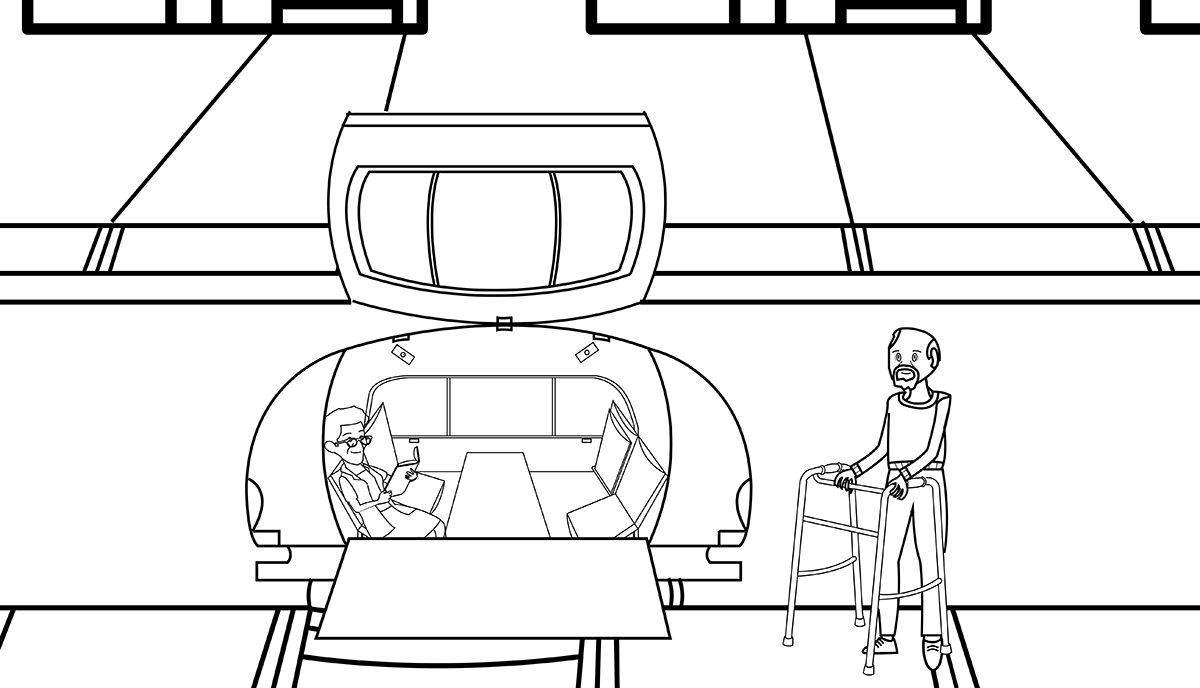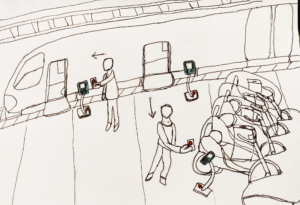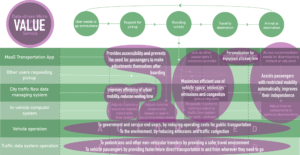Micro-Mobility As A Service
Micro-Mobility As A Service
A speculative inquiry into the future of urban mobility with an aging population in mind, using a systemic design process
For this project, I used a systemic design approach to respond to a design brief from MaRS Solutions Lab that aimed to generate possible solutions in the urban mobility design space. After engaging in strategic foresight to identify emerging trends in urban mobility, I developed a system design concept that established a data-driven “micro-mobility as a service” environment within which large cities would operate their transportation networks. The goal of such a system is to serve the circular (zero-waste) economy, reduce the environmental impact of the transportation industry, improve mobility and provide accessibility and independence for the aging population in the relatively near future.
Problem Definition
How might emerging technology trends change how people move within cities in the near and mid-term future? What might those altered or entirely new systems look and function like?
How might the large aging population today change strategies for future urban mobility to best serve this demographic?
How might urban mobility systems function in a circular economy?
Methods
Relevant STEEP-V trend analysis
Strategic foresight / defining design opportunities
Qualitative data analysis & synthesis
System concept development through POEMS (people, objects, environments, messages, services) considerations
System mapping
Scenario storyboarding
User journey mapping
Key Insights
 Values are shifting away from personal vehicles as status symbols and more towards economical and environmentally sustainable concerns.
Values are shifting away from personal vehicles as status symbols and more towards economical and environmentally sustainable concerns.
Data-driven mobility is trending towards taking over urban mobility systems due to maximizing traffic pattern efficiency, convenience, insights through leveraging big data analytics in real time.
Micro mobility is gaining popularity as people opt for cheaper, more convenient “first and last mile” mobility options such as e-scooters, bicycles, and hoverboards.
Dominance of sharing economy – values shifting increasingly from personal ownership to renting as needed.
Desire for instant fulfillment in services will continue to expand into expectations for urban mobility systems.
Solution Development
Starting in a group of four, we studied trends and sorted them into categories based on perceived design opportunities.
We each selected opportunities to pursue individually. By this time, I was already thinking about “micro mobility as a service” for my concept, but I was not thinking far outside existing micro-scale vehicles.
I considered the concept of modular vehicles that change size based on demand and operate within a data-driven mobility system to optimize occupied road space.
My final concept dropped the size-changing concept to maximize the flexibility of the system by using small-scale vehicles, a computer vision system in the vehicles, and service requesting app to make who gets how much available space and when as efficient as possible.
Results
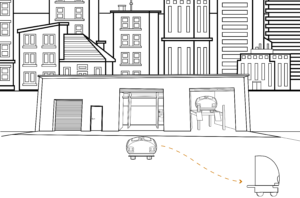
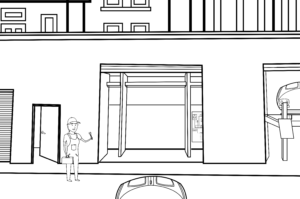
The final concept did an excellent job of showing a holistic view of how a system like this would work, why it works, and how it would benefit specific kinds of users. Since it was meant to address a design brief involving an aging population, I made sure to include one scenario that looks at a senior user needing to travel, and show briefly how different, trending forms of technology might play a part in making the use of this system as comfortable and accommodating as possible for hypothetical aging populations in the near future. Given more time to develop the concept, I would go in further depth into the circular economy aspect, and better clarify how the material flows could be sourced, re-used and repaired within the system as a whole, not just in mechanic shops.
Design Process
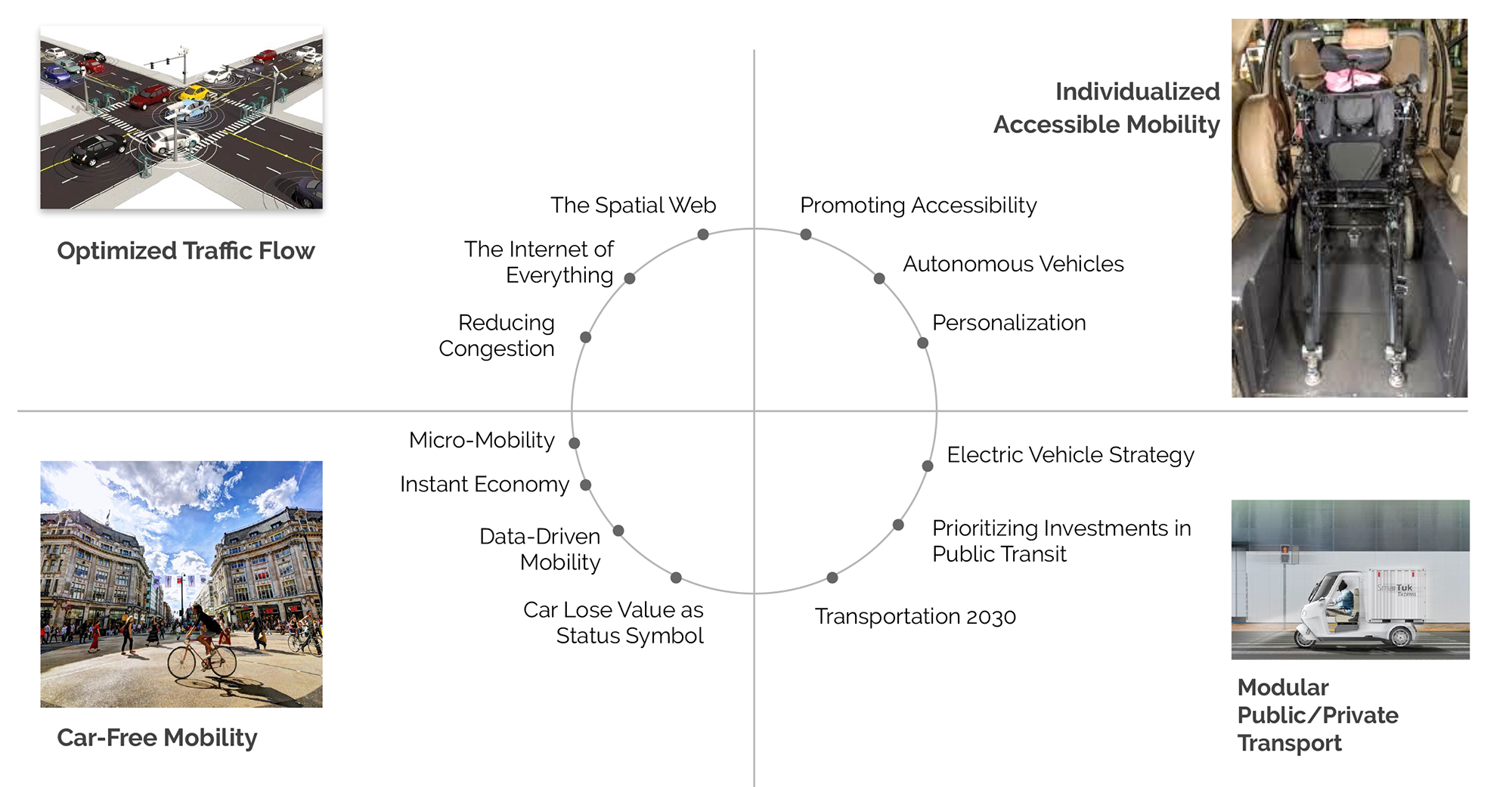
Systemic design processes are incredibly versatile, but very loosely structured, due to the need to respond to so many different circumstances and so much complexity. The aim is to design systems, which need to consider how the entire spectrum of people, objects, environments, messages, services, policies, organizations, behaviours, and more function individually and collectively, and influence each other, with different effects. The critical factor that started this process was to identify trends in our subject area and consider what directions to take in designing a system to take advantage of the opportunities these trends present.

![]() Strategic Foresight & STEEP-V Trend Research
Strategic Foresight & STEEP-V Trend Research
A “STEEP-V” trend analysis means to study social, technological, economic, environmental, political, and changing value-based trends within a subject area. I studied technological and changing value-based urban mobility trends, which included “micro mobility” {use of small scale vehicles to cover the ‘first and last mile’ of a trip), “data-driven mobility (optimization of traffic patterns and flow by making vehicles and city-wide networks seamlessly communicate), ”cars lose value as a status symbol” (trend of people abandoning personal vehicles for more practical and affordable alternatives), and more within the technological and personal values-driven sectors.

![]() Trend Aggregation Into Opportunity Categories
Trend Aggregation Into Opportunity Categories
After completing the STEEP-V research, I helped collate the trends into themes once we had a full group of six or seven trends from each category. The result was several promising opportunity areas, including “car-free mobility”, “individualized accessible mobility”, and “modular public/private transportation”.

![]() Identification of Design Opportunities
Identification of Design Opportunities
At this point in the project, my group of four formalized one design opportunity area for each of us to work on individually, though with collaboration for feedback and pushing concepts ahead. It was here that I defined the concept of “micro-mobility as a service”: mobility as a service (MaaS) is a well-known concept (the model by which Uber operates), but I envisioned an integrated public transportation network that used micro-scale vehicles such as e-scooters and skateboards to connect people with macro-scale rapid transport (subways, trains). After getting feedback, it was clear that I needed to move beyond a novel systemic use of existing vehicles and look at what micro-mobility could become if advanced to this end.

![]() Development of “Micro-Mobility As A Service” Concept
Development of “Micro-Mobility As A Service” Concept
Once on the train of thought of re-envisioning what micro-mobility could be, I began sketching vehicle concepts designed to optimize road space even more than individual vehicles scooters would if adopted en masse. By introducing modularity to its interior components and expandability, I was aiming to make the difference in vehicles in use during peak and off-peak hours as minimal as possible, while still allowing the service to be on-demand, and able to intelligently pick up passengers from where they are, instead of from pre-defined hubs. This form and functionality allowed the system to take shape.

![]() Fully Defined System Map
Fully Defined System Map
With a more innovative concept now developed, I completed a detailed system map, showing the flows of people in transit, data, money and materials through notable city institutions, the Toronto Transit Commission services, data managing software and recycling plants. The service would see slower transit options like buses replaced with a large fleet of autonomous vehicles that use the MaaS model and expand and contract in response to demand, in order to maximize the efficiency of road space usage and minimize congestion, while improving the accessibility of the urban mobility service.

To develop further on the system map, the project turned towards identifying leverage points (aspects of existing systems in which the greatest positive effects occur as a result of minimal changes) and how the new system generates value. This was to be illustrated via storyboards showcasing scenarios that demonstrate value generated from several different user perspectives. I built two scenarios that helped add vital value-generating details, such as making the interior of the vehicles configurable for accommodations, having the configurations occur prior to pickup by leveraging a user-maintained transport needs profile, as well as using a computer vision system to track when seats are actually available to maintain the efficiency of space usage on board.

![]() Final Product-Service-System Concept
Final Product-Service-System Concept
By the end of my design process for my product-service-system concept, I had developed a user journey map and used it to overlay values generated at each level of the journey. I also added a third scenario that focused on a maintenance journey and included some detail on how the concept would serve the circular economy needs, by having repair service outlets be equipped to do in-house repair and recycling of materials.
Group & Individual Project
Teammates
- Charlene Li
- Mei Li
- Hao Lin
My Responsibilities:
- Trend analysis & synthesis
- Sketching
- System mapping
- User journey mapping
- Scenario storyboarding
- January-March 2020
- Trend analysis, systemic design. system mapping, user journey mapping, storyboarding
- Design Research, Service Design, Systemic Design
